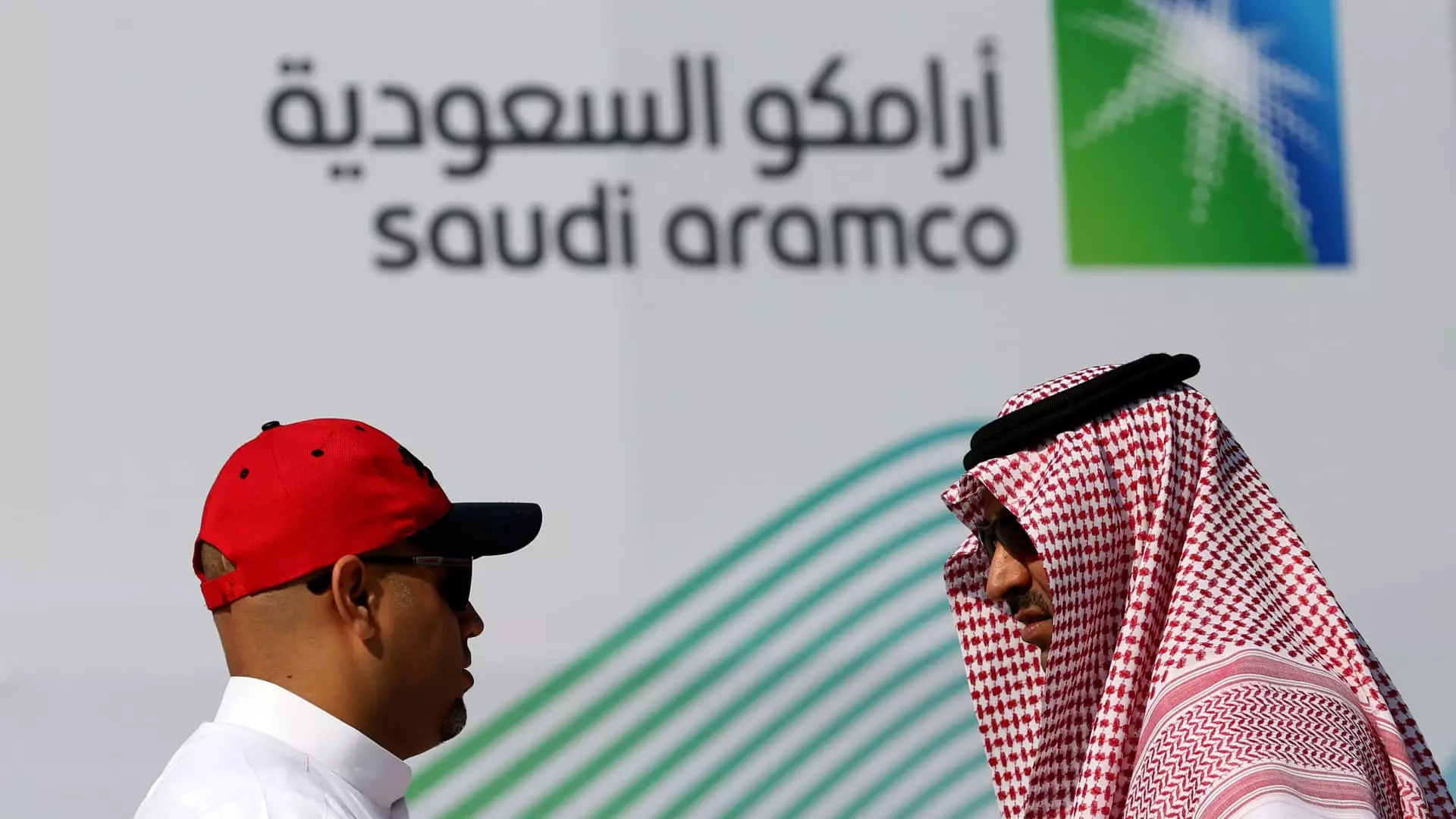Saudi Aramco, a titan within the global oil industry, has recently disclosed that its net profit for the first quarter of 2025 fell by 5% year-over-year, sinking to a staggering $26 billion from $27.3 billion in the same period the previous year. This drop, while marginally better than analyst expectations, unveils a worrisome reality for not just the company but also the broader economic landscape of Saudi Arabia. In a world where oil prices are plummeting and production levels are being curtailed, the reverberations of such financial performance are bound to be felt far and wide.
The situation signals continuing strain on the kingdom’s financial fortitude, reflected in a notable decrease in operational cash flow from $33.6 billion in 2024 to $31.7 billion this year. That this decline occurred during a turbulent period for the oil market underscores the importance of diversified economic strategies. Saudi Arabia, historically reliant on oil revenue, faces a dire need to reconsider its fiscal foundations or risk falling into a more profound economic abyss.
A Short-Term Dividend Bump Masks Deeper Issues
While the base dividend payout, which excludes performance-based earnings, saw an increase of 4.2% year-on-year to reach $21.1 billion, the full picture is far harsher. The dramatic reduction of the performance-linked dividend—from a startling $31 billion to just $21.36 billion—paints a bleak forecast for the Saudi treasury. For a nation that is heavily dependent on these earnings to fund public services and mega-projects, such volatility is untenable.
CEO Amin Nasser’s remarks might suggest confidence—the assurance of Aramco’s resilience in volatile markets—but what does this really mean for ordinary Saudis? The sobering reality is that the mega dividends that once served as the backbone of the Saudi economy are under threat. As oil prices teeter at unsustainable levels, the government may find itself grappling with increasing budget deficits, pushing the nation into deeper reliance on debt and potentially undermining its social welfare programs.
OPEC’s Erratic Moves and Their Consequences
In recent months, OPEC+ has made decisions that could be interpreted as desperate attempts to stabilize an increasingly fragmented oil market. The coordinated production cuts that were meant to stabilize prices have seemingly backfired, causing chaos rather than control. The abrupt shift in policy to accelerate production—despite dwindling demand—can only be described as ill-conceived. Such moves appear more reactive than proactive, a sign that OPEC+ may be losing its grip on the very markets it seeks to regulate.
The credibility of Saudi Arabia as a leader in global oil production is at stake. With analysts predicting further downward revisions of oil price expectations, the kingdom faces a foreseeable crisis. The ramifications extend beyond mere numbers on a balance sheet; they threaten economic stability and may even foment civil dissatisfaction as critical services come under financial strain.
Demand Decrease: A Harbinger of Economic Recession
With forecasts from the U.S. Energy Information Administration predicting an average Brent crude price of $65.85 per barrel, the outlook appears grim. Goldman Sachs forecasts an average of $60 per barrel for the remainder of 2025, far below the $90 per barrel needed for the Saudi budget to balance. Such predicaments may lead the kingdom to undertake drastic measures such as asset liquidation, increased borrowing, or severe cutbacks on public spending.
Economists predict that if oil prices stay low, the Saudi deficit could balloon to unmanageable proportions, ranging from $70 to $75 billion. This impending financial doom could trigger a cascade of economic failures, pushing the country further into indebtedness and perpetuating a cycle of reliance on an increasingly unstable commodity market.
Time for Change: Embracing Economic Diversification
Saudi Arabia has long articulated plans for economic diversification away from oil dependence, primarily through its Vision 2030 initiative. Yet, the urgency of the current situation compels a reevaluation of how swiftly and effectively the kingdom can wean itself off its oil dependency. The time for procrastination is over; failure to adapt could lead to dire straits both financially and socially.
While the Aramco bubble might have inflated confidence in maintaining a resilient economy, the reality is far more complicated. The future of Saudi Arabia hinges on its ability to innovate beyond fossil fuels and tap into sustainable energy solutions. It is no longer just a question of fiscal policy, but about forging a future that does not crumple under the weight of augmentative failures in the oil market. The stakes have never been higher, and the time for transformative action is now or never.

